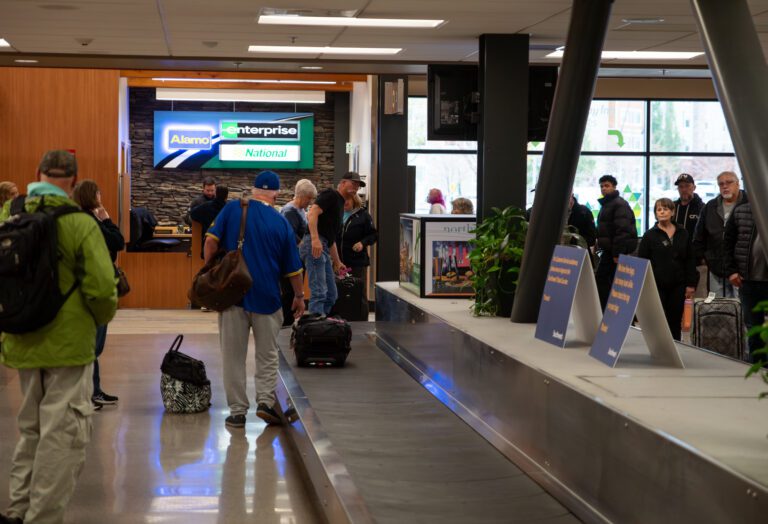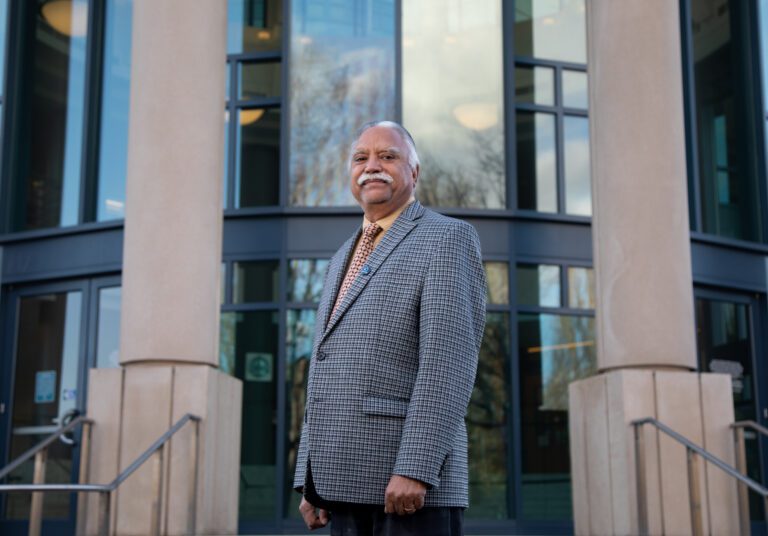Tax money paid by Bellingham residents into a proposed Climate Action Fund would help reduce carbon pollution and promote renewable electric power, City Council members were told Monday.
At Monday’s Bellingham City Council meeting, Mayor Seth Fleetwood and Climate and Energy Manager Seth Vidana presented the fund’s four proposed areas of investment to the council members in their second presentation of a three-part series for the council.
The potential areas of investment target the city’s largest sources of pollution: transportation, and commercial, industrial and residential energy, Vidana said.
Overall, the fund’s goals are to mitigate carbon pollution, adapt to the changing climate, serve vulnerable populations and create a climate-focused workforce, Vidana said.
“Bellingham has set climate targets per our climate action plan,” he said, “and current local state and federal resources aren’t enough to make sufficient progress on those targets.”
Vidana hopes the bold actions Bellingham takes to address climate change will inspire other cities, states and nations to do the same.
Renewable energy
The Climate Action Fund’s first area of investment is renewable electricity, targeting the city’s community electrical use which produces nearly one-third of its carbon pollutants. Funds would go to purchasing or generating electricity through renewable resources like wind, solar or hydropower.
Ideally, funds would go to contracting with an external developer to purchase a large quantity of renewable energy. The developer would design, permit, finance and install the energy system, Vidana said.
“Our desire would be to scale our purchases with the carbon content of the grid so we’re buying only the amount of energy necessary to get to net low or net zero from our carbon electricity use,” Vidana said.
A larger scale purchase would quickly secure a large influx of renewable power and it’d be the cheapest way to reduce emissions. But, another option is to fund local solar power production, creating more community jobs.
Commercial and residential buildings may even see incentives for switching to solar power.
The Climate Action Fund would need approximately $4.5 million for the first year of full expenditures.
Low-carbon transportation
The fund’s second area of investment focuses on low-carbon transportation programs and infrastructure. Transportation produces less than a third of Bellingham’s carbon emissions.
The fund aims to facilitate a reduction of Bellingham’s trips in single-occupancy vehicles from 68% to 50%; increase trips by bicycle from 3% to 12% by 2036; and increase Bellingham’s electric vehicle population from 1,260 to 68,000 by 2030.
The city will be asked to allot $15 million to purchase charging stations for electric vehicles and e-bikes.
The fund could also provide incentives for publicly-accessible chargers on private property, e-bike purchases and private charging for homes and businesses, Vidana said.
Electrification
The fund’s third investment area seeks to neutralize the 12% carbon pollution produced by commercial and residential natural gas use by enabling owners and residents to efficiently use electricity instead for space and water heating.
Investments might include incentives for electrification, assistance with insulation and sealing air leaks, capital improvements to city buildings, and workforce development.
The goal is to make the cost of electrification development free, or at least very low for low-income community members, Vidana said.
If these investments were to be made, thousands of buildings across Bellingham would require attention, which would present another opportunity to bring more jobs to the community.
The cost to electrify and weatherize all residential and commercial buildings would be about $900 million, and Bellingham’s portion would be $300 million, or $10 million per year until 2050.
Adapting to extreme weather
The final area of investment presented to the council focuses on assisting Bellingham residents, especially the elderly and infirm, in adapting to extreme weather caused by climate change, Vidana said.
Few buildings in Bellingham are air-conditioned and many residences back up to forest lands, making them more vulnerable to forest fires.
Investments in this area could include portable air conditioners and air filtration units for homebound residents, heat pumps for common areas in subsidized housing and cooling stations and cooling kits.
Investment in fire buffer maintenance and wildfire education could combat wildfires.
These measures could reduce hospitalization and death among residents, and reduce property damage, saving millions of dollars, Vidana said.
For now, though, the cost of these investments is unknown due to the ever-changing climate.
“We see a Bellingham that runs on 100% renewable electricity and uses those resources wisely,” Vidana concluded. “It’s a community that is actively adapting to climate change and making sure that our most vulnerable populations are prepared to handle extreme weather events.”
Wrapping up the presentation, council members were given the opportunity to weigh in and provide feedback for the further consideration by the mayor’s office. Council members Michael Lilliquist and Lisa Anderson encouraged presenters to shift more funding toward underserved and low-income populations, as city funding can address energy efficiency and solar installation, for example.
The presenters were praised by Lilliquist for the equity components of the Climate Action Fund, and asked to economically and chronologically prioritize them.
“We need to have everyone achieve an equitable climate future,” Vidana said.



